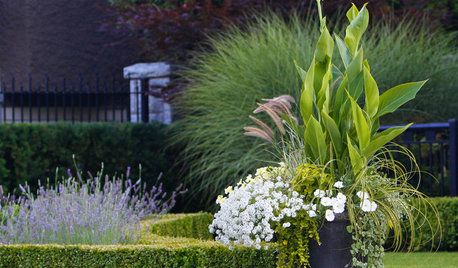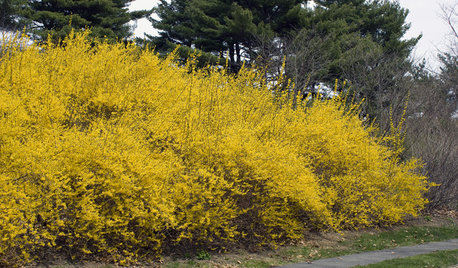Fungicide
spicymeatball
10 years ago
Related Stories

GARDENING GUIDESTree Care: Common Tree Diseases and What to Do About Them
Learn to recognize trees that may be affected by diseases or pests so you can quickly take action
Full Story
HOUSEPLANTSHow to Force Amaryllis Bulbs Indoors
Enjoy vibrant red blossoms even as gardens turn snowy white, by teaching this hardy repeat performer to ignore the calendar
Full Story
HOUSEPLANTSPlay Up Some Fiddleleaf Figs for a Lively Indoor Tune
Strike a dramatic chord in a minimalist scene or a country note in a rustic setting — fiddleleaf fig plants harmonize with any style
Full Story
GREAT HOME PROJECTSWhat to Know About Adding a Reclaimed-Wood Wall
Here’s advice on where to put it, how to find and select wood, what it might cost and how to get it done
Full Story
GARDENING GUIDESGreat Design Plant: Knock Out Roses
As glorious as their high-maintenance kin for a fraction of the work, Knock Out roses make even beginners look like garden stars
Full Story
FARM YOUR YARDHello, Honey: Beekeeping Anywhere for Fun, Food and Good Deeds
We need pollinators, and they increasingly need us too. Here, why and how to be a bee friend
Full Story
GARDENING GUIDESGreat Design Plant: Cannas
Easy to grow and maintain, these showy, colorful plants are perfect for beginning gardeners
Full Story
TREESGreat Design Plant: Downy Serviceberry
Plant this sculptural tree in fall or spring for year-round interest and graceful beauty
Full Story
SPRING GARDENING8 Sunny Spring Flowers
Add a burst of yellow to the garden with forsythia, witch hazel, winter jasmine and more
Full Story
GARDENING FOR BUTTERFLIESGardening for the Bees, and Why It’s a Good Thing
When you discover how hard bees work for our food supply, you may never garden without them in mind again
Full Story

digdirt2
edweather USDA 9a, HZ 9, Sunset 28
Related Professionals
Saint Louis Park Landscape Architects & Landscape Designers · Brandon Landscape Contractors · Fuquay-Varina Landscape Contractors · New Braunfels Landscape Contractors · Soddy Daisy Landscape Contractors · St. Louis Landscape Contractors · Wentzville Landscape Contractors · Alabaster General Contractors · Alhambra General Contractors · Auburn General Contractors · Country Club Hills General Contractors · Hutchinson General Contractors · Ashburn Decks, Patios & Outdoor Enclosures · Riverside Decks, Patios & Outdoor Enclosures · St. Louis Decks, Patios & Outdoor EnclosuresspicymeatballOriginal Author
digdirt2
spicymeatballOriginal Author
digdirt2
spicymeatballOriginal Author